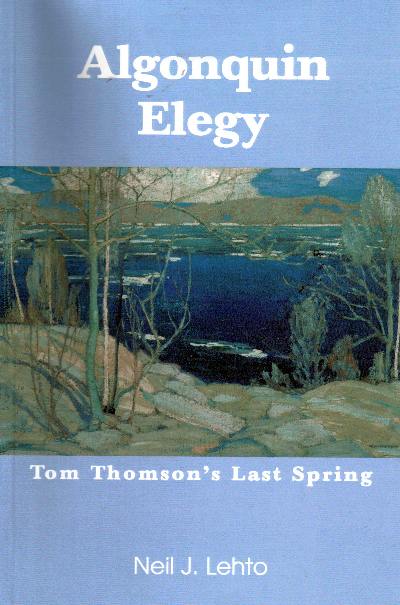 |
July 21, 2006New Tom Thomson book offers a
good summer read
|
Eighty-nine years ago this
month Canadaís best-known landscape artist Tom Thomson died mysteriously on
Canoe Lake in Algonquin Park. His 62 small 1917 paintings on birch shingles
purchased at the Standard Planning Mill in South River are extremely valuable
and rarely available for purchase. His other small and larger paintings are
even more unavailable except in public viewing in galleries. I wrote about the
major Thomson touring exhibition at the National Gallery in Ottawa in 2002
celebrating his 125th birthday. The catalogue from the exhibition is
one of the best of many books and other references on Thomson.
 |
Tom
Thomson painting The Canoe 1912 (Tomís canoe). |
Like Grey Owl where some
people dwell on his behaviour rather than his great conservationist and writing
achievements, Thomsonís work is often overshadowed by persistent efforts to
figure out how he died in his prime on July 8, 1917 at 39 years of age. As the
father of Canadian landscape painting the interest in his life is understandable
if at times irritating when it takes away from his artistic achievement.
Another fascinating book on
Thomsonís demise has recently be published by American retired lawyer and
budding author Neil Lehto. His book Algonquin Elegy: Tom Thomsonís Last Spring
(2005) is available for purchase on line, at the Friends of Algonquin Park in
the Information Centre in Algonquin Park and through bookstores everywhere.
I read the book with
interest recently and thoroughly enjoyed it in spite of a few minor flaws. The
main thrust of the book is a cold case analysis of the evidence from various
sources and the harsh analysis of those sources. Like a courtroom lawyer trying
to win his case and unlike other Thomson authors he attacks the credibility and
motivation of some people expressing their point of view on Thomsonís death.
These points of view include the idea that he fell overboard while urinating, or
when drunk, or from a heart attack. Some suggest he was murdered or committed
suicide. One source I read recently but not found in the book claims it might
have been a rare waterspout weather disturbance.
Lehto examines various
ideas and like a good lawyer should makes his case for what he believes to be
true. You are the jury Ė do you agree with his arguments?
The book has an added
feature I enjoyed where Lehto introduces several chapters of fiction
interspersed with the scholarly analysis. It is like reading two books at once
and as enjoyable as it is it can be confusing where his fictional intervention
is juxtaposed with the scholarly lawyer approach. The fictional chapters are
about a lawyer who is researching the life of Tom Thompson and hss four
daughters and wants to be a writer in real life like Lehto.
 |
New Tom Thomson
Book |
I had a bit of a problem
with a couple of chapters where he carries his fictional approach to the
imaginary reenactment of Thomson events with extensive dialogue among the
players from the real story. You as a member of the jury could be confused when
making a decision on the case if you donít separate fact from fiction.
Lehto and his book have
received a lot of attention and he will be at several Ontario events this summer
speaking and signing books. Check his website below for details. He will be at
the McMichael Gallery August 6, at Thomsonís home town of Leith August 7th
and the Owen Sound Public Library at 6. Locally he will be at the South River
Arts Festival August 12 and will visit another South River event that evening as
a part of the Tom Thomson Experience: a Canadian Art Adventure Ė a separate 3
day event supported by the Art Gallery of Ontario ($597 Inclusive). Well-known
artist Jill Boshulte provides creative guidance to artists in the group.
For more info on Lehtoís
book log on to
www.algonquinelegy.com. For information on the Thomson Art Adventure log on
to
www.algonquincanada.com/tomthomson. For my previous articles on Thomson
check my website for August 2 and August 9, 2002.
Heritage Perspective Home Page
| 
![]() Past
Forward is now on Facebook "LIKE" us to keep in touch
Past
Forward is now on Facebook "LIKE" us to keep in touch